Abstract
Undergraduates' button presses occasionally produced points exchangeable for money. Left and right buttons were initially correlated with multiple random-ratio (RR) and random-interval (RI) components, respectively. During interruptions of the multiple schedule, students filled out sentence-completion guess sheets describing the schedules, and points were contingent upon the accuracy of guesses. To test for sensitivity to schedule contingencies, schedule components were repeatedly reversed between the two buttons. Pressing rates were consistently higher in ratio than in interval components even when feedback for guesses was discontinued, demonstrating sensitivity to the difference between ratio and interval contingencies. The question was whether this sensitivity was based directly on the contingencies or whether it was rule-governed. For two students, when multiple RR RI schedules were changed to multiple RI RI schedules, rates became low in both components of the multiple RI RI schedule; however, subsequent prevention of point deliveries for the first few responses in any component produced high rates in that component. For a third student, response rates became higher in the RI component that provided the lower rate of reinforcement. In each case, performance was inconsistent with typical effects of the respective schedules with nonhuman organisms; it was therefore plausible to conclude that the apparently contingency-governed performances were instead rule-governed.
Keywords: rule-governed behavior, contingency-governed behavior, sensitivity to contingencies, verbal behavior, multiple schedule, random ratio, random interval, button press, undergraduates
Full text
PDF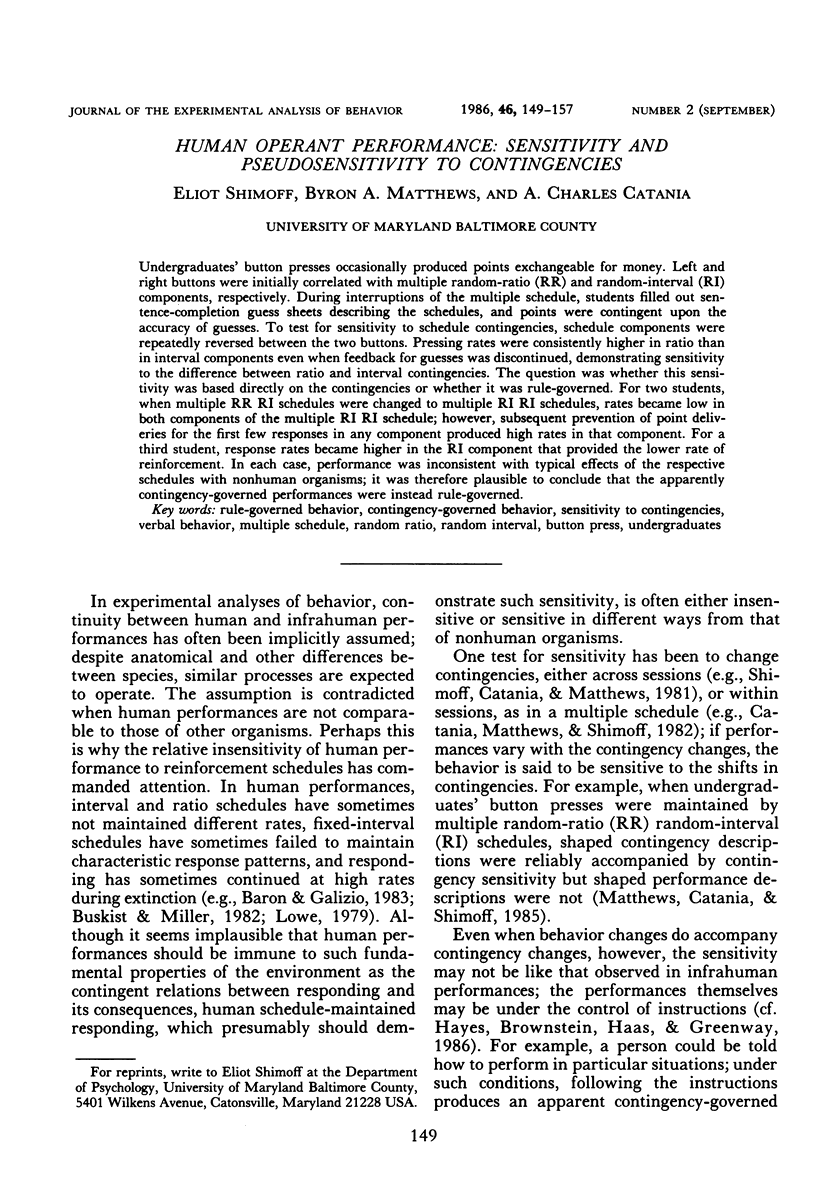
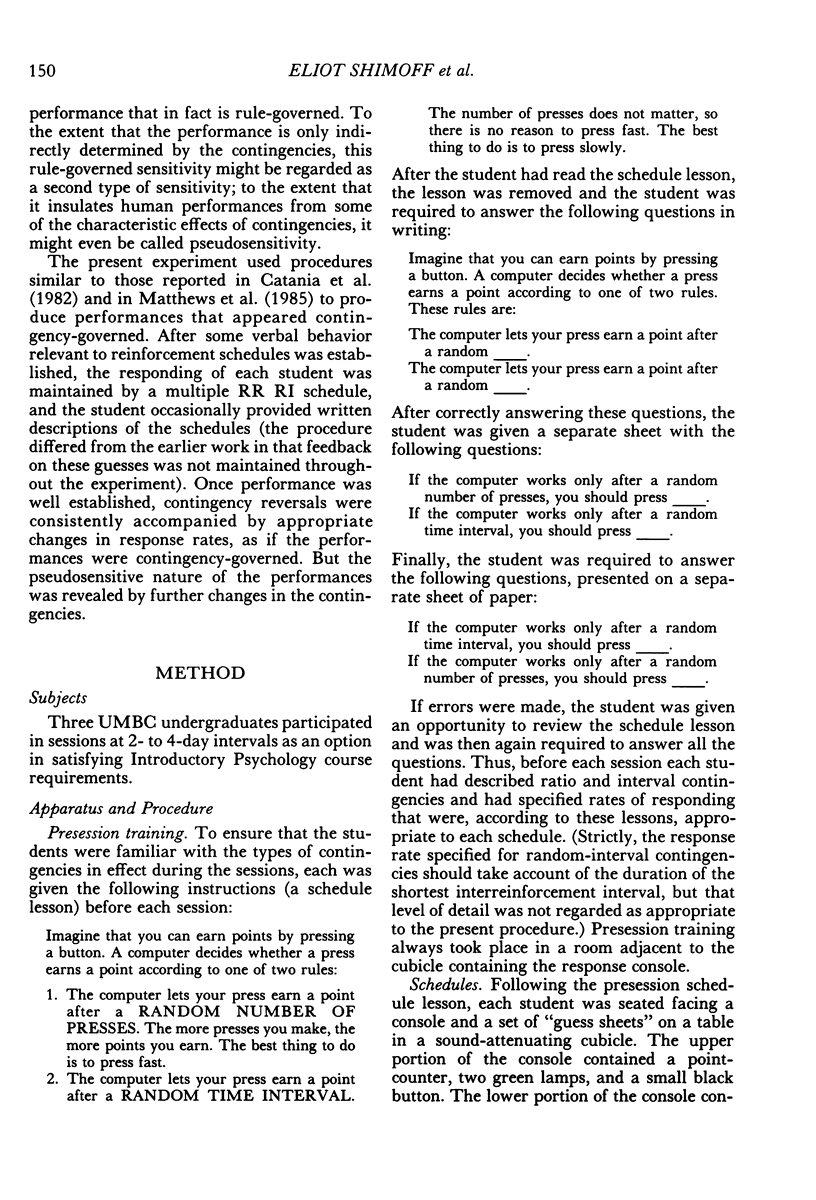

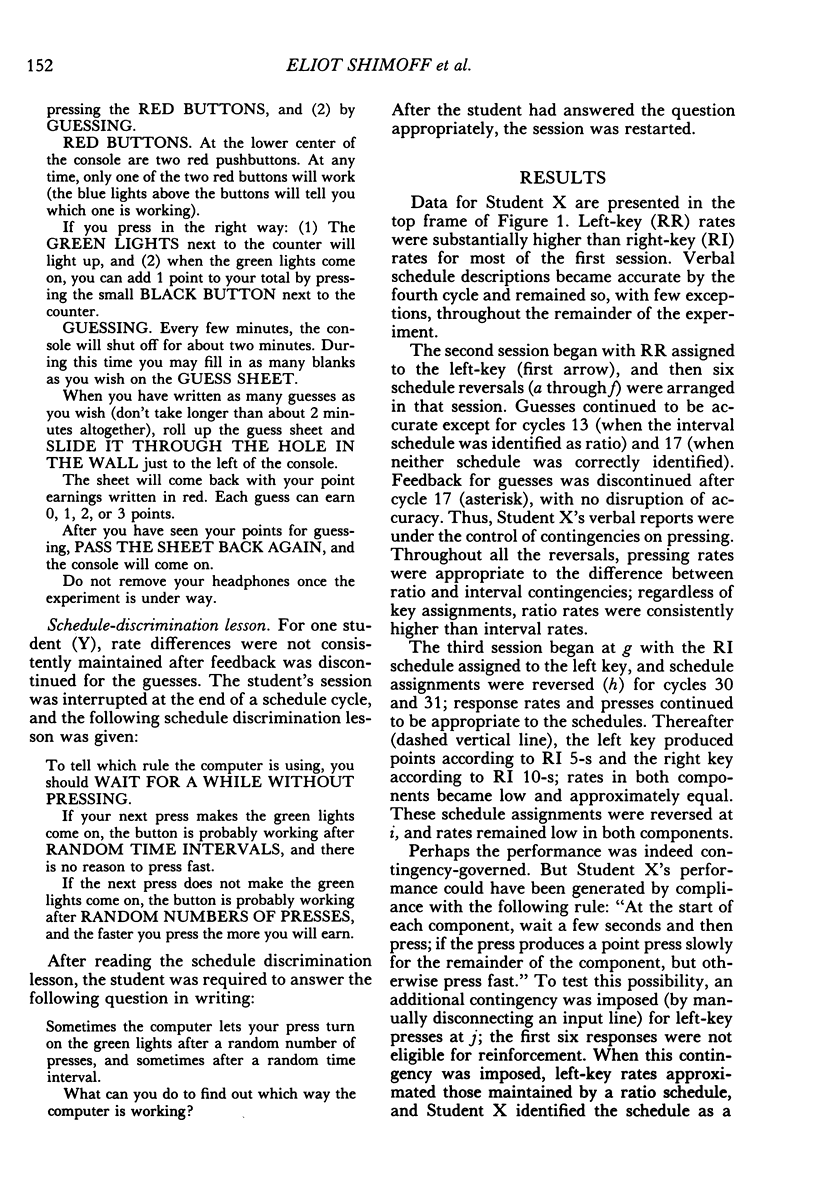
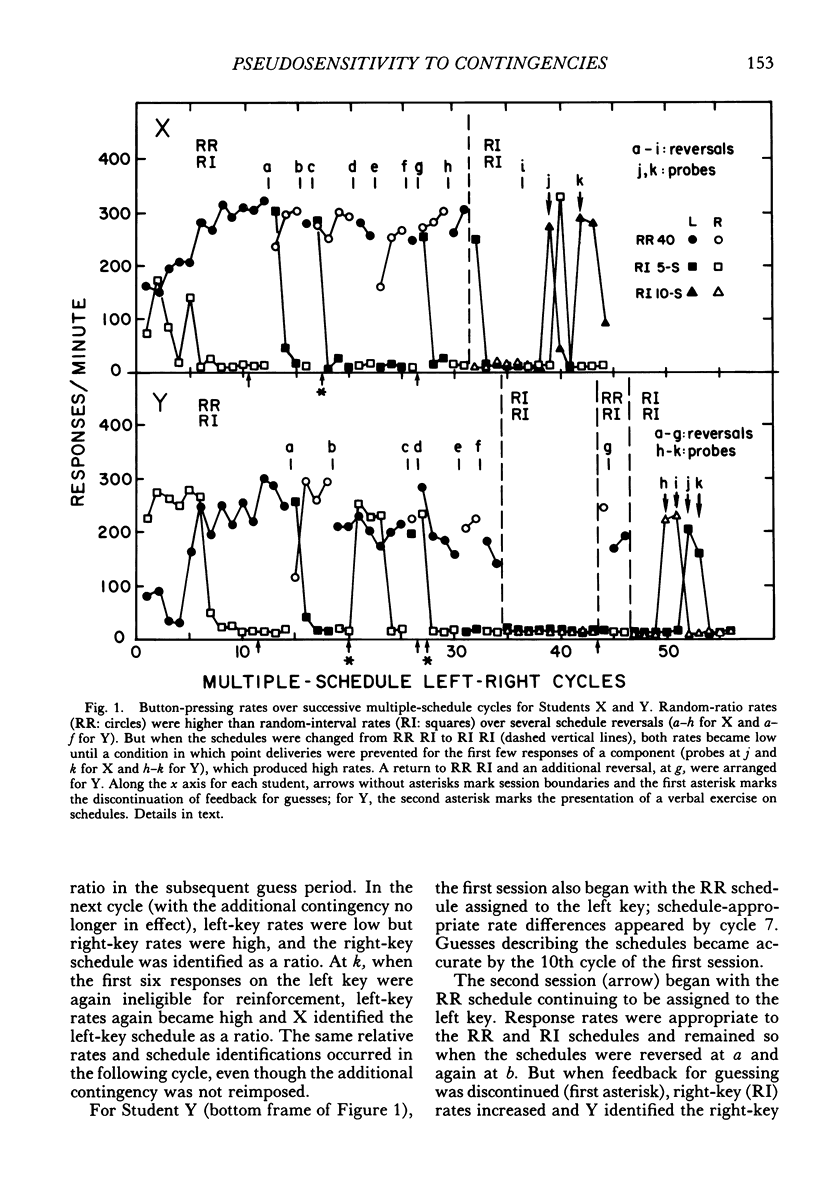
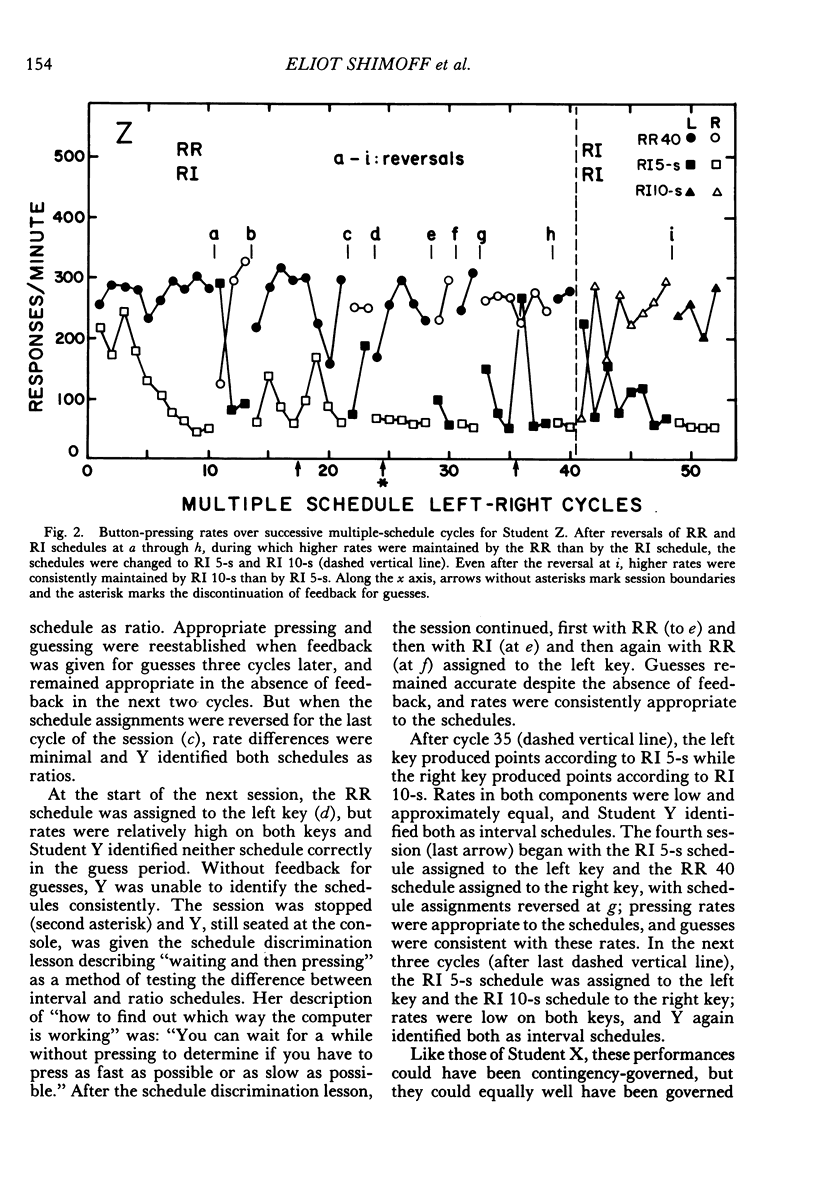
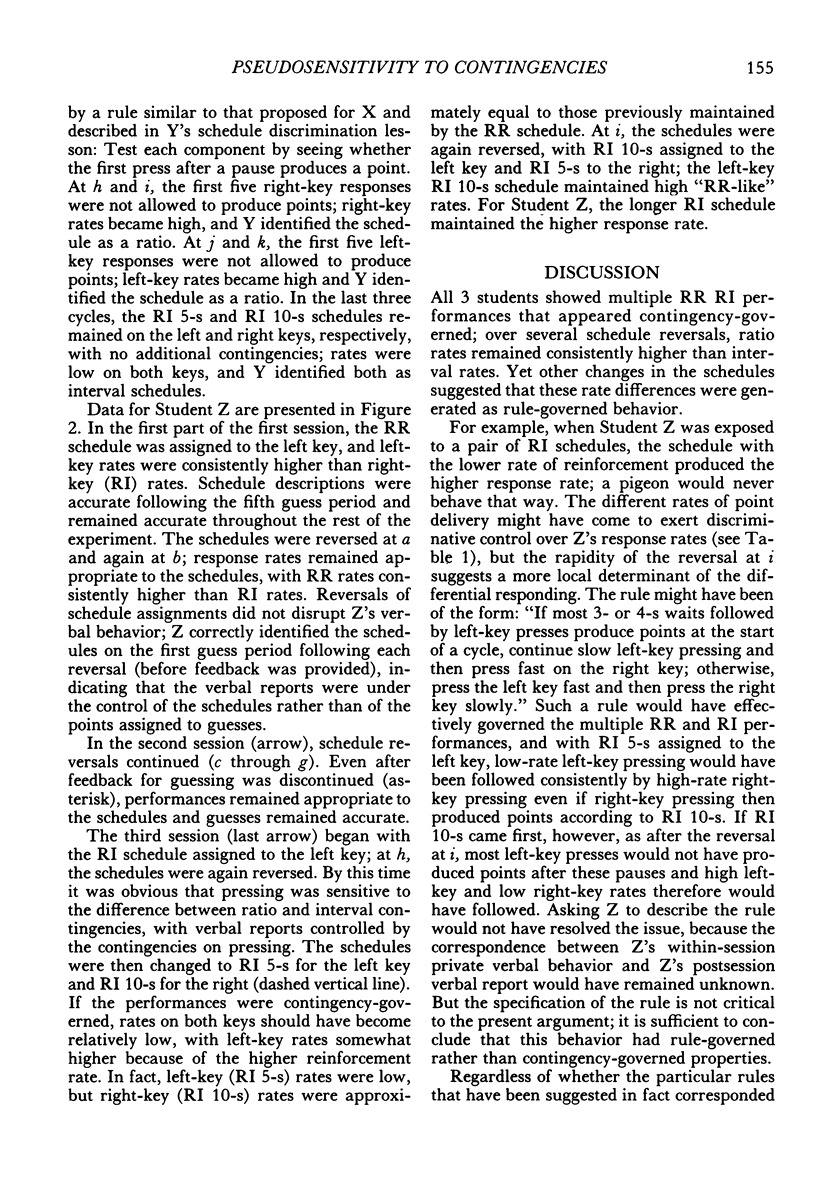
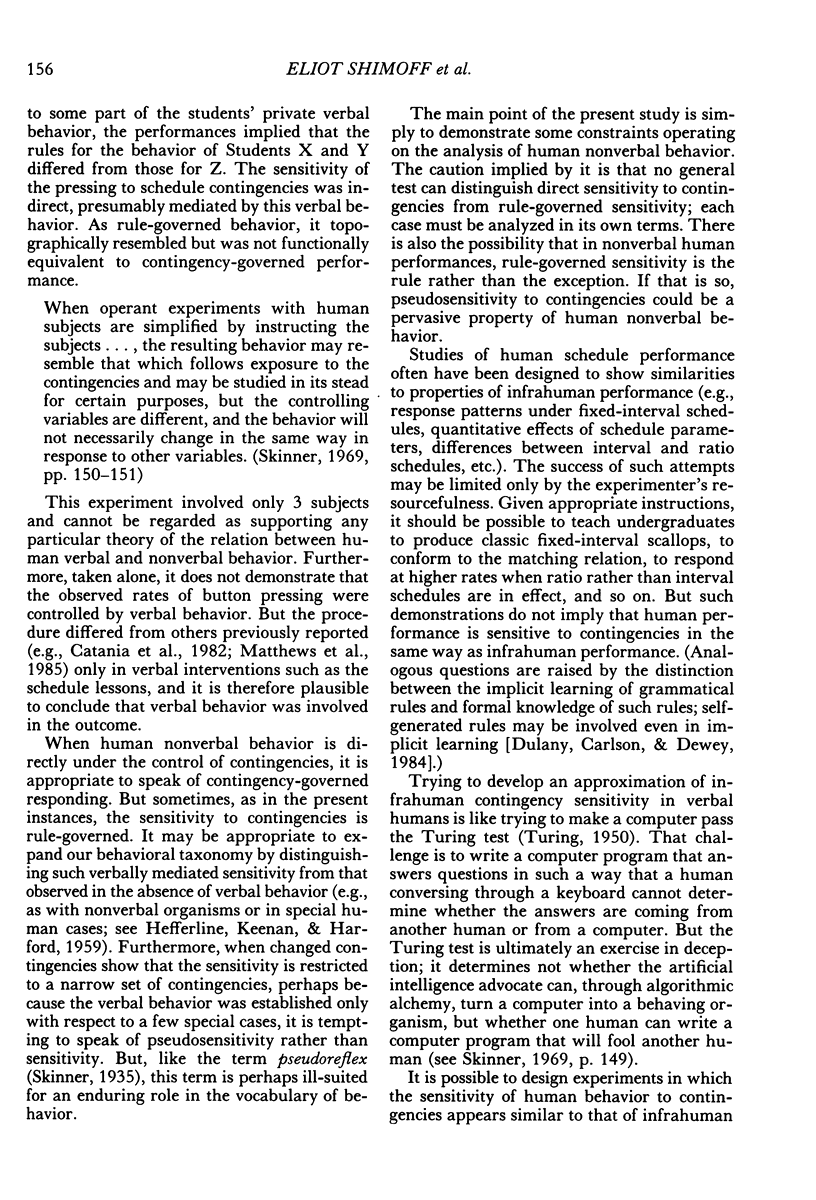
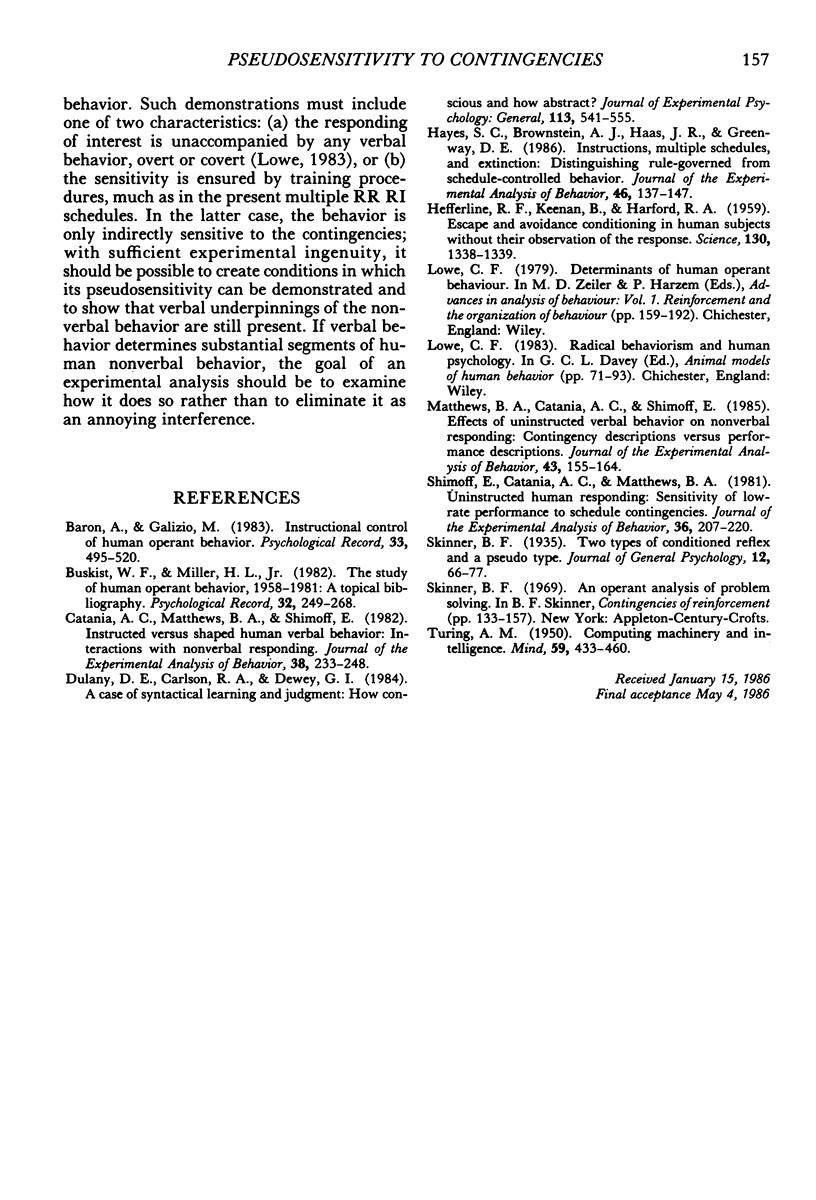
Selected References
These references are in PubMed. This may not be the complete list of references from this article.
- Catania A. C., Matthews B. A., Shimoff E. Instructed versus shaped human verbal behavior: Interactions with nonverbal responding. J Exp Anal Behav. 1982 Nov;38(3):233–248. doi: 10.1901/jeab.1982.38-233. [DOI] [PMC free article] [PubMed] [Google Scholar]
- HEFFERLINE R. F., KEENAN B., HARFORD R. A. Escape and avoidance conditioning in human subjects without their observation of the response. Science. 1959 Nov 13;130(3385):1338–1339. doi: 10.1126/science.130.3385.1338. [DOI] [PubMed] [Google Scholar]
- Hayes S. C., Brownstein A. J., Haas J. R., Greenway D. E. Instructions, multiple schedules, and extinction: Distinguishing rule-governed from schedule-controlled behavior. J Exp Anal Behav. 1986 Sep;46(2):137–147. doi: 10.1901/jeab.1986.46-137. [DOI] [PMC free article] [PubMed] [Google Scholar]
- Matthews B. A., Catania A. C., Shimoff E. Effects of uninstructed verbal behavior on nonverbal responding: Contingency descriptions versus performance descriptions. J Exp Anal Behav. 1985 Mar;43(2):155–164. doi: 10.1901/jeab.1985.43-155. [DOI] [PMC free article] [PubMed] [Google Scholar]
- Shimoff E., Catania A. C., Matthews B. A. Uninstructed human responding: Sensitivity of low-rate performance to schedule contingencies. J Exp Anal Behav. 1981 Sep;36(2):207–220. doi: 10.1901/jeab.1981.36-207. [DOI] [PMC free article] [PubMed] [Google Scholar]


